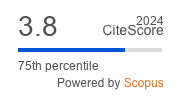Article | Open Access
New Urbanism: Past, Present, and Future
| Views: | 13575 | | | Downloads: | 13729 |
Abstract: The New Urbanism, initially conceived as an anti-sprawl reform movement, evolved into a new paradigm in urban design. Recently, however, some researchers have argued that the popular appeal of New Urbanism has eroded, the movement has lost its significance, and critical research on the broader theme has tapered off. In response, this article investigates whether the movement has lost its currency and explores the future of New Urbanism in the context of contemporary circumstances of development. The article begins with a brief description of the conceptualization of New Urbanism as an exception to the development trends of the time. Collaborative efforts of its protagonists that have contributed to the integration of New Urbanist concepts into other programs, policies, and development regulations are presented in the next section to describe its expansion, to clarify its mainstreaming, and to call attention to its broader impact. The concluding section presents contemporary circumstances of development and changes that are intensified by the COVID-19 pandemic, including those related to the nation’s demographics, climate change, technological advances, rapid growth of the digital economy, and acceleration of e-commerce to explore the significance of New Urbanism for future development.
Keywords: COVID-19; New Urbanism; sustainable growth; urban and suburban development
Published:
© Ajay Garde. This is an open access article distributed under the terms of the Creative Commons Attribution 4.0 license (http://creativecommons.org/licenses/by/4.0), which permits any use, distribution, and reproduction of the work without further permission provided the original author(s) and source are credited.


